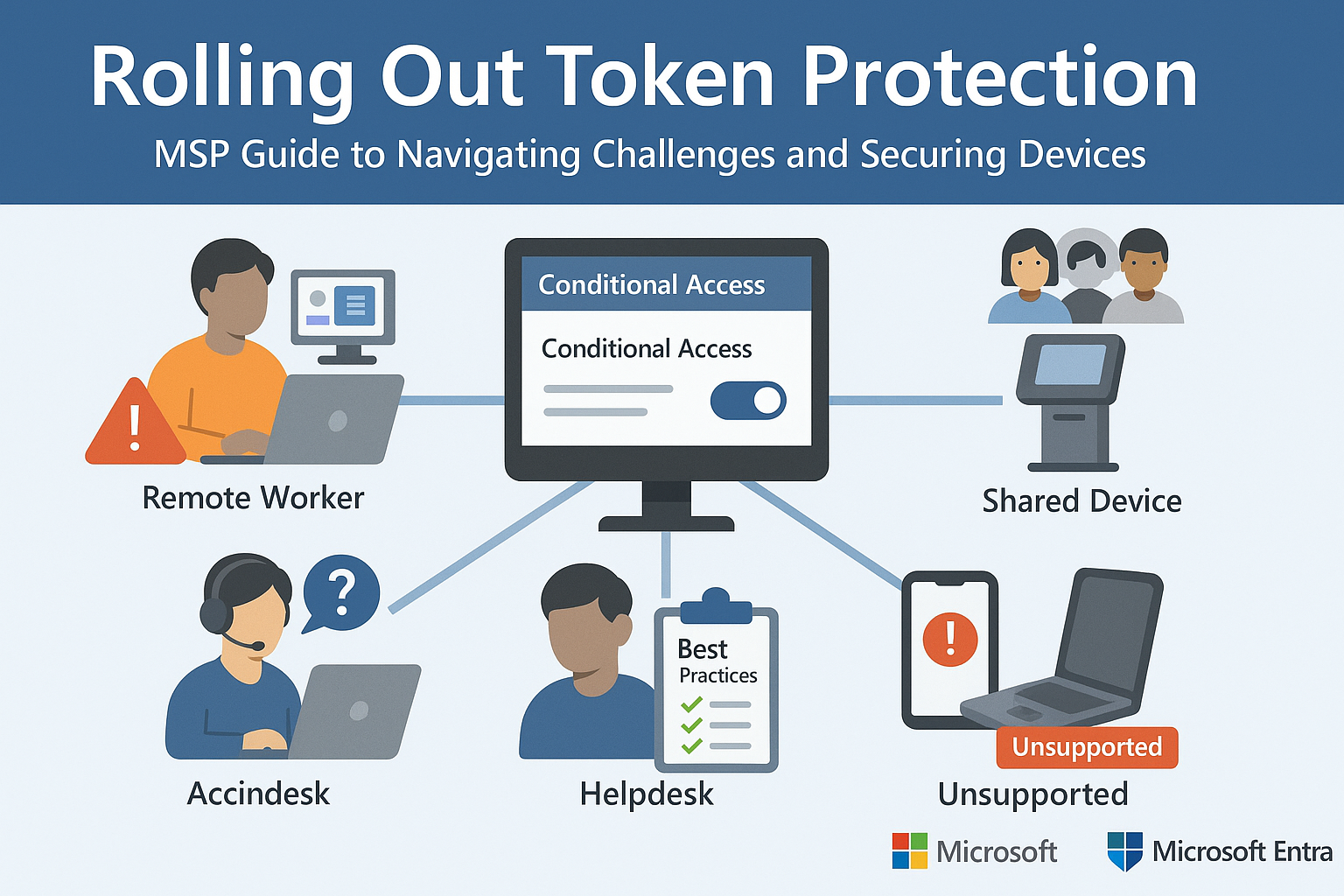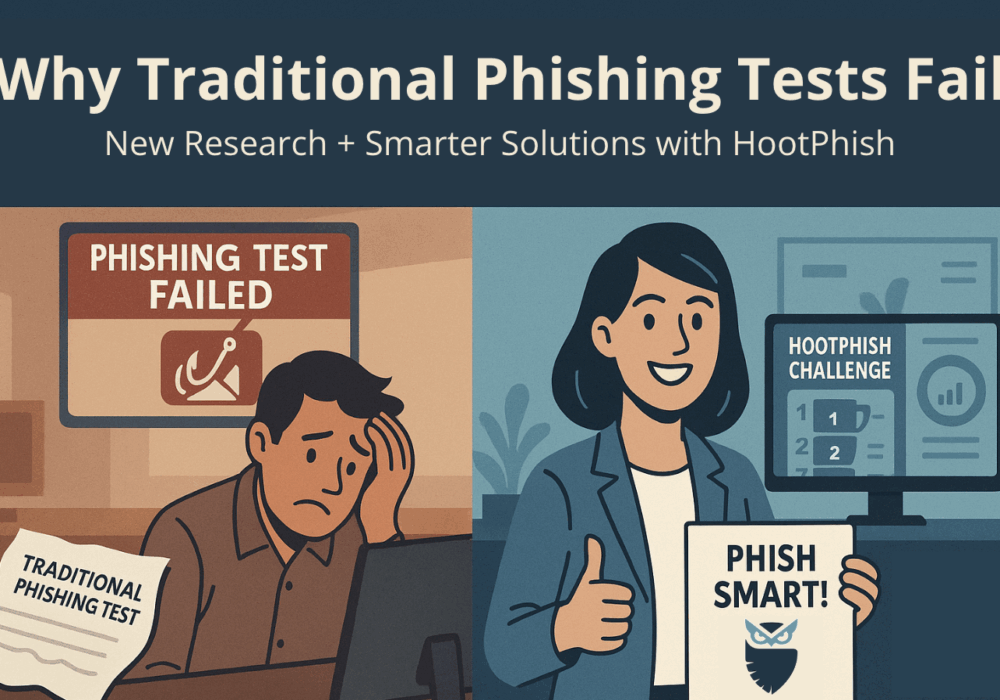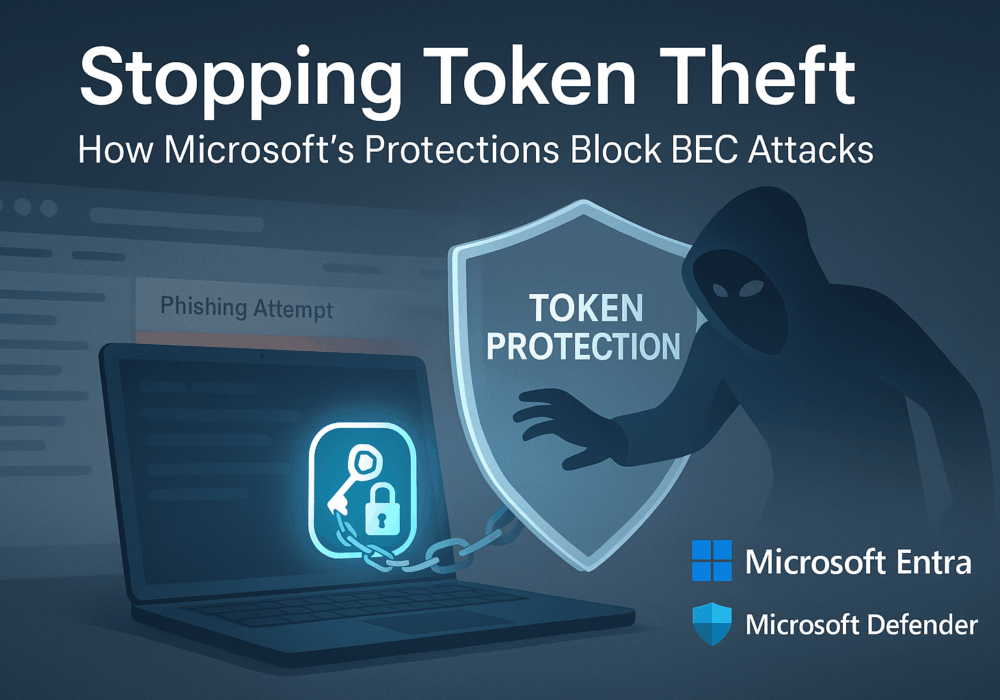Part 2 of Our Microsoft Entra Security Series
In Part 1, we explored how Microsoft’s Token Protection enhances session security by binding tokens to the device where they were issued, thwarting token replay attacks and BEC threats. Now in Part 2, we’ll cover the real-world rollout considerations MSPs must weigh before turning this feature on across client environments.
While the security benefits are clear, implementing Token Protection, especially in hybrid, BYOD-heavy, or legacy environments, can create friction. This guide explains the key pitfalls, outlines mitigation strategies, and shares proven rollout practices MSPs should follow for a smooth transition.
Why It Matters:
Most Microsoft 365 breaches stem from identity compromise, through phishing, token theft, or Business Email Compromise (BEC). Traditional MFA can’t stop an attacker once they’ve stolen a valid session token. Token Protection closes this gap by ensuring tokens only work on the device they were issued from.
Important: Token Protection is not a phishing blocker, credential safeguard, or lateral movement stopper. It’s a containment and enforcement tool that activates after login to stop token misuse.
➡ Token Protection follows MFA. These controls reduce the chance of compromise in the first place.
➡ Token Protection is only effective if devices are trustworthy. Endpoint health is critical.
➡ These controls keep sessions secure after sign-in, not just during login.
➡ Even with token binding, attackers may pivot. Detection ensures visibility and response.
➡ If session or identity controls fail, data-centric security limits damage.
Think of Token Protection as the middle guardrail in a broader zero-trust defense:
Issue: Token binding only works on devices that are Entra-joined, hybrid-joined, or registered.
Impact: Personal or unmanaged devices not enrolled in Entra or Intune will fail token binding and lose access to apps like Outlook, SharePoint, or Teams.
Mitigation:
Issue: Admins often use multiple VMs, RDP sessions, or jump boxes that don’t support token binding.
Impact: Breaks workflows like accessing Azure/M365 portals from secondary systems.
Mitigation:
Issue: Token Protection expects a 1:1 relationship between device and user.
Impact: Shared logins or fast user switching cause session conflicts or app errors.
Mitigation:
Issue: Apps not using modern auth (OAuth 2.0 + OpenID Connect) may bypass token binding.
Impact: Users may experience app crashes, failed logins, or unpredictable behavior.
Mitigation:
Issue: Token binding only supports Windows 10+ devices today.
Impact: macOS, iOS, Android—even official Microsoft apps like Outlook Mobile—don’t enforce token binding.
Mitigation:
Issue: Virtual desktops often break token/device pairing due to pooled profiles and session resets.
Impact: Frequent reauthentication or broken app sessions.
Mitigation:
Issue: Binding failures typically result in vague “sign-in errors,” frustrating users and increasing ticket volume.
Mitigation:
To ensure a successful rollout, Microsoft and experienced IT pros recommend the following phased approach:
Token Protection is a powerful step forward in stopping token replay and Business Email Compromise, but it’s not “set and forget.” MSPs must approach deployment with care, context, and client education.
By piloting cautiously, leveraging report-only mode, and proactively communicating with end users, MSPs can implement this feature in a way that maximizes protection without breaking workflows.
Sources and Additional Reading:
Discover and share the latest cybersecurity trends, tips and best practices – alongside new threats to watch out for.

Part 2 of Our Microsoft Entra Security Series In Part 1, we explored how Microsoft’s Token Protection...
Read more
For years, organizations have relied on fake email phishing simulations to measure employee resilience to...
Read more
Welcome to our two-part blog series on Microsoft’s new email security enhancement now included in Office 365 P1...
Read moreGet sharper eyes on human risks, with the positive approach that beats traditional phish testing.
